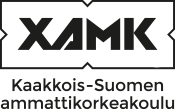Digital painting (5 cr)
Code: MU00EC71-3002
General information
Enrollment
06.04.2022 - 22.04.2022
Timing
29.08.2022 - 19.12.2022
Number of ECTS credits allocated
5 op
Virtual portion
3 op
RDI portion
1 op
Mode of delivery
40 % Contact teaching, 60 % Distance learning
Campus
Kouvola Campus
Teaching languages
- English
Seats
20 - 23
Degree programmes
- Degree Programme in Graphic Design
Teachers
- Sarah-Jane Leavey
Teacher in charge
Sarah-Jane Leavey
Groups
-
GRKV21SPGraphic design, full-time studies
Objective
After successfully completing the course, you:
- understand the potential of Photoshop as an illustration and image processing tool
- are familiar with the tools of Photoshop and digital painting
- are able use Photoshop in a versatile way
- are able to use the program for digital painting purposes
- master digital painting
- are able to publish pictures on various platforms, including web, mobile, print, iPad
Content
- How to use Photoshop for illustration, and what are the correct work methods and tools?
- How to use digital painting together with Photoshop?
- How to use Photoshop in creative image processing?
- What are the correct design and storage methods?
Materials
Learning materials
– Lectures and demonstrations with accompanying downloadable documentation for reference.
– Downloadable Work sheets and exercises
– Links and tutorials on Learn.
Assessment methods and criteria
Teaching methods
Learning route based on a working week
You will attend teaching and guidance sessions as specified in the schedule. Your study routine is determined by the scheduled group sessions and by the self-study assignments.
Learning route that accelerates the studies
If you have acquired prior learning in the subject (fully/partially), contact the teacher in charge prior the course to discuss whether you have the competence required and what are the methods of demonstrating that competence. If you are unable to attend all the classes due to other courses, you are required to complete the learning assignments independently.
Work-based learning route
You need to contact the course teacher prior the course to agree on development assignments that you will perform at your work place. You are required to prove your learning both in theory and practice by giving a presentation to the Teacher.
Employer connections
RDI will be intergrated where possible
Exam schedules
Deadlines:
– In order to benefit from the dedicated feedback sessions students must have at least partially completed the assignments on review at that time.
– If a student misses the deadline for an assignment feedback session, no assurance of feedback at a later date can be given. Current works take precedence.
– If a student can not achieve a required deadline the lecturer must be informed and an extension will be negotiated.
– Unauthorised late return of course assignments will have an effect on final grading. (Between 1 and 2 points deducted)
Content scheduling
Topics covered in the course include:
Understanding the process of Colour mixing in digital painting
Understanding the three aspects of Colour: Local, Optical and Arbitrary rendition
Using Colour, as a tool for projecting emotion and a Story-telling device
Knowing which of the different colour Spaces and wheels to use to improve the quality of your work
Basics modes of composition in painting and illustration making
Understanding 1, 2 and 3 point lighting and how this effects rendering
Students will carry out a series of greyscale and colour exploration tasks digitally. Students will also complete a series of compositional exercises.
Further information
Further information
– Demonstrations and lectures (streamed via Teams) provide relevant theoretical content.
– Students complete a series of greyscale and colour based assignments independently with the help of instructions provided on Learn.
– Students will receive dedicated feedback sessions on their assignments at regular intervals
– Students will deepen their expertise in the use of colour, composition and lighting within the perspective of illustration for graphic design.
Evaluation scale
1-5
Assessment methods and criteria
Assessment Methods:
Peer review and self-evaluation
Register of Attendance
Adherence to schedules and deadlines
Activity Checklists
Performance Rating scale for classroom and homework assignments
Assessment Criteria
Students ability to develop ideas, logical thinking, creativity, ability to communicate one’s ideas both verbally and visually, quality of work, ability to follow instructions, ability to work to deadlines, level of attendance, activity and contribution to class, evidence of improvement in technical/design/aesthetic skills.
Grading. Fail, Incomplete, 1:pass, 2:pass+ 3:Commended 4:Highly commended 5:Distinction
